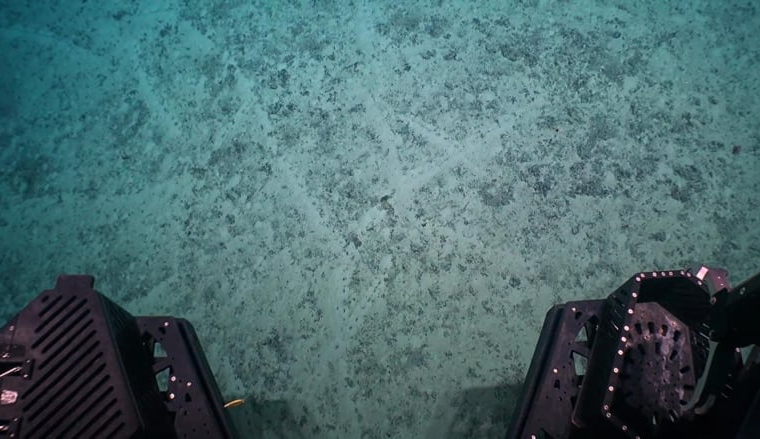Mysterious, neatly aligned holes have been discovered deep in the ocean — and scientists are stumped about their origin.
The small, oblong cavities are spaced about 10 centimetres apart and repeat, in some cases, for several metres.
“It looks a little bit like a sewing machine punched its way through the bottom,” Mike Vecchione, a deep-sea biologist with the National Oceanic and Atmospheric Administration (NOAA), told As It Happens guest host Paul Hunter.
Researchers with NOAA’s Ocean Exploration team initially discovered sets of holes two-and-a-half kilometres below the surface of the Atlantic ocean north of the Azores late last month.
Days later, the researchers found more holes, this time around 1,500 metres deep on the Azores Plateau.
Some hypothesized the holes were biological in nature — perhaps a fish “walking” along the seafloor. Others questioned whether the holes were human-made — maybe from a spiked tire.
Twitter users, where the research group crowdsourced theories, also considered extraterrestrial involvement or the presence of the Loch Ness monster.
Vecchione says the finding is curious — and the symmetry of the holes unexplained — but believes an animal is most likely the culprit.
“I think what’s happening is that there’s an animal burrowing in the sediment, under the surface of the sediment, and periodically punching chimneys up to where the water is, maybe to get clean water circulating through its burrow,” he said.
Piles of sediment sit around the opening of each hole, suggesting a force pushed it from below, he said. NOAA researchers could not confirm whether the holes were connected beneath the surface.

It’s not the first time Vecchione has spotted holes like this. In 2004, he published similar findings on the mid-Atlantic ridge with scientist Odd Aksel Bergman.
Still, he has no concrete evidence to back up any of the possible explanations.
“I’m thinking that this truly is something that nobody knows the answer to,” Vecchione said.
‘I’ve never seen anything like that before’
While the holes are undoubtedly mysterious and fascinating, marine geologist John Jamieson says they shouldn’t come as a surprise.
“It’s a big seafloor and we haven’t even scratched the surface,” said the Memorial University associate professor and Canada research chair in marine geology.

Jamieson studies hydrothermal vents — essentially hot water springs that run beneath underwater mountain ranges and volcanoes and release into the deep sea.
But those vents shoot jets of 300 C water and can range from a metre to 100 metres in size. These holes are small, more gently created and unexpectedly neat by comparison.
Though not a marine biologist, he agrees the most likely explanation would come from a burrowing animal — but the shape of the holes, he says, gives pause.
“Normally a burrow is somewhat spherical, where these have a very sort of rectangular, almost right-angle type geometry to them,” he said.
“I’ve never seen anything like that before.”

Probably not human-made
Vecchione points to the fossil record for his burrowing-animal hypothesis. He says that fossils of sub-sediment tubes with “chimneys” leading to the surface have been previously discovered.
“I think that is an argument against any kind of man-made explanation for this,” he said.
Asked whether that animal could be a species currently unknown to humans, Vecchione said he simply didn’t know.
He hoped that by releasing photos of the holes on social media someone with knowledge of the holes would come forward.
But Vecchione says he’s still waiting for an answer.
“It’s been weeks now and all I’m getting is guesses from people and nothing solid.”
Written by Jason Vermes. Interview with Mike Vecchione produced by Arman Aghbali.












